In the days of square-riggers, water-sails were common. Deployed below the boom, they were used in light air when sailing off the wind, on a broad reach, or a dead run. Today, they’re largely forgotten.My experience with water-sails started when I was on a multi-day camp-cruising trip about five years ago, and had a long downwind leg to sail one morning in very light air. I had just packed up my tent along with the 6′ × 3′ piece of poly tarp that I use as a ground cloth. While sailing along in the light air, it occurred to me that the rectangular tarp would fit perfectly below the boom and sit right above the water’s surface, giving me about 25 percent more sail area. I used the grommets in the two top corners to secure this makeshift sail under the boom and attached a line to each of the two bottom corner grommets so that I could sheet-in the tarp. The increase in boat speed was immediately noticeable, and I’ve had good success with similar makeshift water-sails on several trips since then. My first water-sail was a makeshift arrangement that utilized a 6’ x 3’ ground cloth I had on board during a camp-cruising trip. I tied it around the boom and fastened a sheet to the outboard lower corner. It wasn’t the best-looking sail but when set it noticeably increased my speed on a calm morning.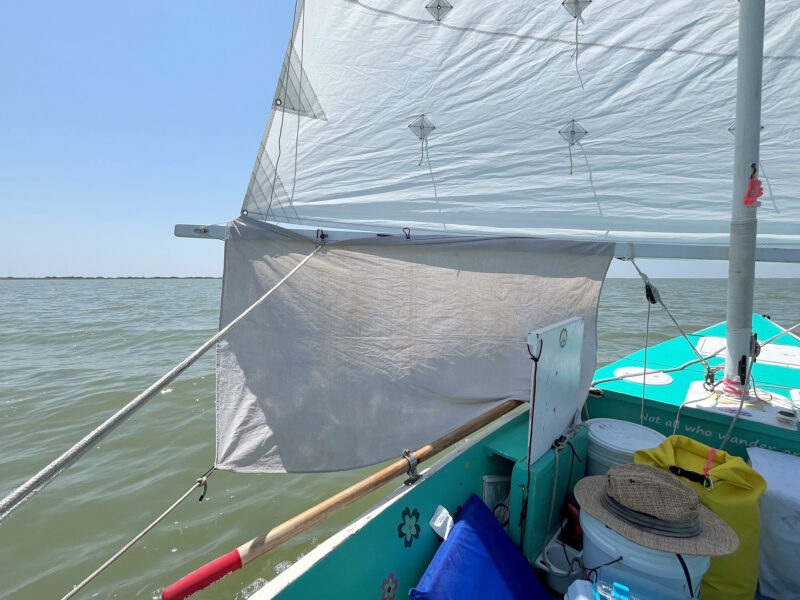 Photographs by the author
Photographs by the author
Join The Conversation
We welcome your comments about this article. To include a photo with your remarks, click Choose File below the Comment box.

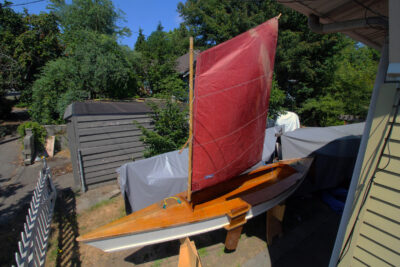
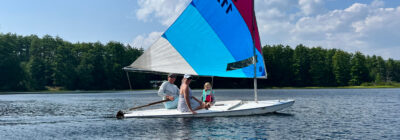
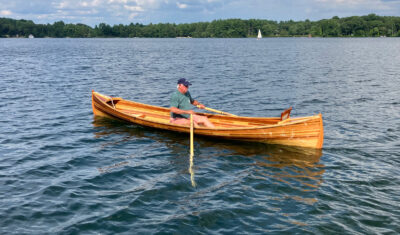
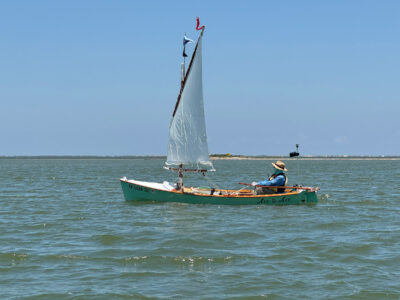
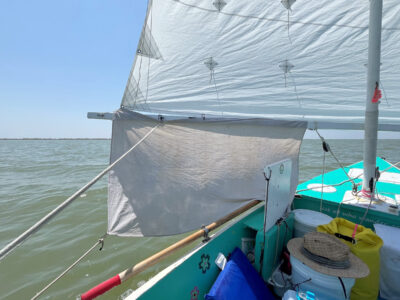
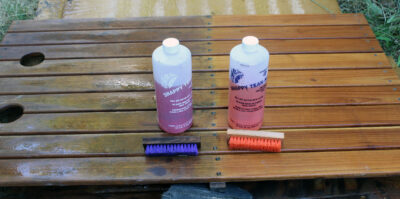
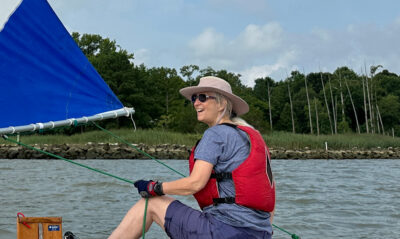
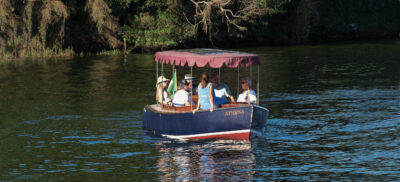
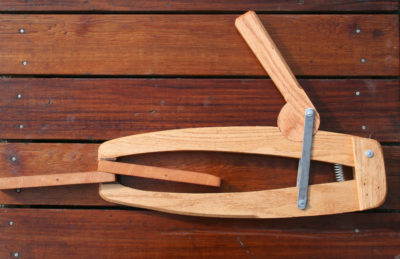
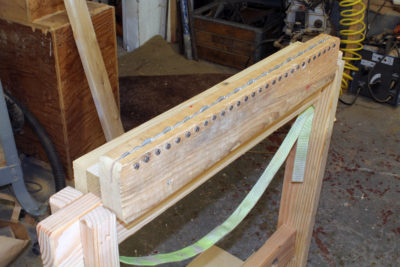
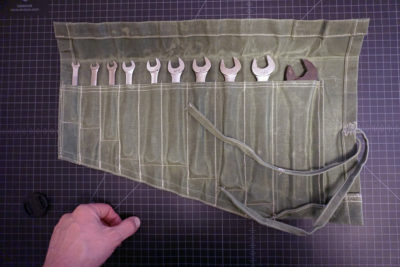
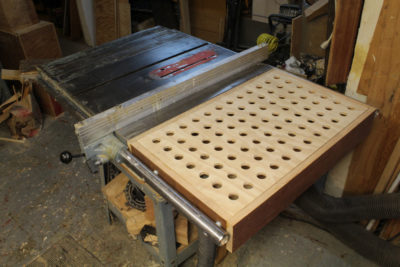
Square riggers had no lower booms on their lower sails. Must have rigged water sails differently.
Falconer’s Marine Dictionary (1780) has this definition of a water-sail: “a small sail spread occasionally under a lower studding-sail or driver boom, in fair wind, and smooth sea.” Studding sails and drivers both have a boom holding the sail’s foot.
Here’s the dictionary’s definition of a driver: “an oblong sail, occasionally hoisted to the mizzen peak, when the wind is very fair. The lower corners of it are extended by a boom or pole, which is thrust out across the ship, and projects over the lee quarter.”
—Ed.